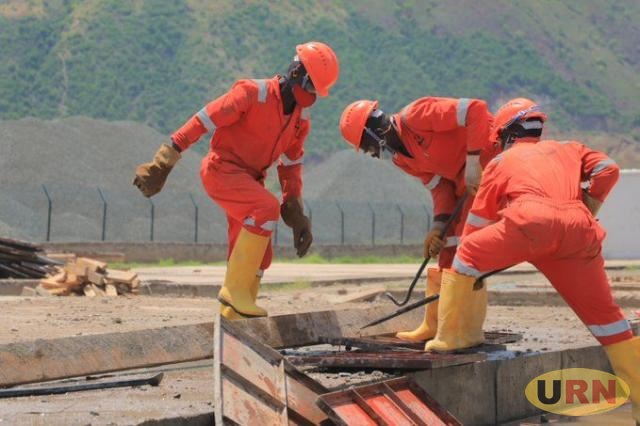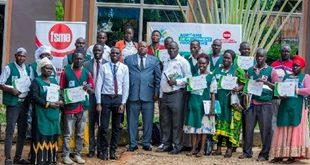
London, England | THE INDEPENDENT | Research from market research company Euromonitor International has forecast the GDP of Sub-Saharan Africa to double by the year 2040 from the 2022 figure of US$ 2 trillion to over USD 4.5 trillion.
Euromonitor’s report, Sub-Saharan Africa: A Rising Economic Frontier, looked at the economies of Uganda and 45 other countries in Africa as part of its research into the continent’s economic conditions, current and future. Rising consumption, commodity exports and foreign direct investment are expected to drive Africa’s economic growth, backed by a surge in the economies of East Africa.
Euromonitor has forecast that over 2022-2040, GDP in East Africa is expected to rise by 193% in real terms, a considerably faster rate than Central Africa (+128%), West Africa (+105%) and Southern Africa (+79%). East Africa’s economic growth is predicted to be one of the fastest globally, outpacing other emerging and developing markets such as India (+164%), Vietnam (+171%), and Indonesia (+130%).
The region is predicted to become a USD 1 trillion economy by 2037 and is anticipated to overtake Southern Africa as the second-largest regional economy by 2039. By 2040, East Africa is expected to account for 28% of Sub-Saharan Africa’s GDP, up from 21% in 2022.
The region’s key heavyweight economies of Ethiopia, Kenya, Uganda and Tanzania will drive this economic growth, with average GDP across all four expected to surge by 200% over the forecast period.
Continued foreign direct investment inflows into East Africa are anticipated to sustain the region’s strong ecoonomic momentum with investments expected to go to technology, energy, manufacturing and services sectors, as well as IT services and renewable energy solutions.
It finds that Sub-Saharan Africa could have been US$ 700 billion richer based on pre-2015 growth trends. Fransua Vytautas Razvadauskas, Insights Manager at Euromonitor International, said while sub-Saharan Africa has its fair share of issues and hurdles to overcome, based on projections by Euromonitor International, it is well positioned to become the next global economic frontier, elevating this often-overlooked region of the world to a prominent powerhouse on the global stage by 2040.
Building a Green Economy could be a strong driver of economic growth in Africa Sub-Saharan Africa has the potential to leverage its favourable landscape and climate to benefit from investments in green and sustainable energy, Euromonitor notes. This has become especially clear amid the war in Ukraine which has led to countries reevaluating their dependence on fossil fuels.
The International Renewable Energy Agency estimates that 90% of the world’s electricity can come from renewable energy sources by 2050, yet, as of 2022, only 26% of electricity output globally came from renewables
In 2022, 70% of Sub-Saharan Africa’s electricity output came from fossil fuels. Yet over 2010-2022, wind and solar power energy generation in Sub-Saharan Africa collectively grew by 21,000 GWh and accounted for 23% of the total growth of electricity output generation. Feeding the region’s economic growth will require a more robust, affordable and sustainable energy sector, especially since in 2022 just 53% of Sub-Saharan Africa’s population had access to electricity.
The global shift away from fossil fuels has created unprecedented demand for minerals and metals needed to build green technologies, which are resources Africa has in abundance. This represents immense growth and large opportunities to develop mineral and metals supply chains in Sub-Saharan Africa.
A growing youth and middle class population in Sub-Saharan Africa is also likely to necessitate investment from governments and companies in delivering sustainable energy, financial services and infrastructure that enables connectivity and growth in the region to meet rising consumer demand.
Razvadauskas added that for companies to thrive in this fast-growing, uniquely diverse region of the world, they need to do their due diligence and understand the nuances of the area and its countries.
“Stability needs to take precedence over fast growth, which in turn can help build regional brand awareness and improve prospects for future partnerships. As the middle classes grow across the region, companies need to adjust to the expectations of this new, young, and rapidly urbanising population.”
A rising economic frontier with uneven growth Sub-Saharan Africa is a rising frontier, but economic growth will remain uneven across the region as countries will remain at varying stages of development.
While GDP is forecast to more than double in real terms over 2022-2040 in Sub-Saharan Africa, most of the progress will arise from East Africa which is set to become one of the fastest-growing regions in the world. Sub-Saharan Africa remains a small economy despite its large population In 2022, Sub-Saharan Africa accounted for 15% of the global population, yet its economic footprint was lower, generating just 2% of GDP.
An overly large dependence on less productive sectors of the economy, especially agriculture, inhibits economic growth.
Critical challenges are holding back progress
Sub-Saharan Africa remains mired in corruption, macroeconomic instability and poor infrastructure, among other challenges. This greatly reduces the region’s ability to progress and improve the standard of living of its population. In 2022, more than half of the urban population was living in slums, while poverty remains rife.
However, the region does present significant, opportunities Sub-Saharan Africa presents numerous opportunities which include the region’s digital economy, green economy, natural resources, consumption potential and improving value chains.
Its large, young and growing urban population will supplement the region’s labour force and will help it capitalise on its large demographic dividend.
Commercial entry strategies require careful due diligence Sub-Saharan Africa remains a heterogenous economy with countries at different stages of development.
Yet a uniting factor is that many are endowed with relatively weak economic environments. Commercial strategies will require careful due diligence, including prioritising economic stability over high growth and building a diverse portfolio to mitigate risk.
*******
URN
 The Independent Uganda: You get the Truth we Pay the Price
The Independent Uganda: You get the Truth we Pay the Price


